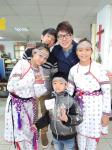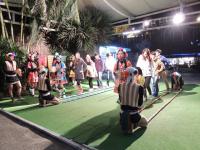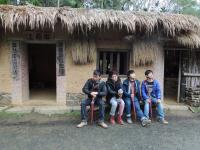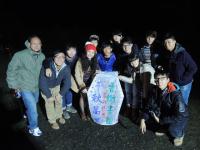
|
|||

|

|

|

|














| Exploring Taiwan Aboriginal Inhabitant Culture | |
| Talking about Taiwan, many people will think of night markets, hot springs, the nostalgic architecture in Jiufen as well as the sunshine and beaches in Kenting. On 27 December 2013, 13 S.H. Ho College members and students began their extraordinary Taiwan journey — to explore Taiwan aboriginal inhabitant culture. To all the participants, it was their first ever encounter with Taiwan aboriginal culture. The group was much impressed by the inhabitants' passion, purity, friendliness and vibrant culture. Arriving at Hualien Aboriginal Children's Home, the group was greeted by the children's warm smiles. After appreciating the children's rhythmic aboriginal dance and songs, S.H. Ho students had mass games with them and the room was soon filled with laughter. "Though the children can't live with parents due to various reasons, they look happy as they live with caring teachers and friends in their second home," Mr. Wong Lik Chun reflected. The purity and passion of the children impressed the urban dwellers. When the participants left the children's home, the children stood outside the building, waving hands until the coach disappeared. Singing, dancing and handicrafts are indispensable parts of the aboriginal community. "I like the peaceful and quiet aboriginal community," said Miss Deng Ruijun. "The embroidery of the Atayal tribe and indigenous dance of the Amis tribe the group demonstrate the vitality of the aboriginal culture." The aboriginal dancing show on the Stone Art Street reflects the life of ancient indigenous community. For instance, the female dancers were performing rice reaping while the male dancers were demonstrating masculinity through hunting. Surrounded by gorgeous and serene natural landscape, the aboriginal inhabitants have been living with the nature in harmony. The aboriginal community seems to be living in a remote paradise, but they are much civilized than what we imagine. Apart from singing and dancing in ceremonies, the indigenous people also use trendy electronic gadgets like smartphones. "While preserving their own culture," said Mr. Chiu Ka Wing, "they do keep in pace with modern society development." Miss Crystal Li enjoyed the serenity and slowness in the aboriginal habitat. The interaction with the community inspired her the idea of alternative travelling — to explore the cultural diversity and historical development of the destinations instead of ordinary leisure travel. Immersing in the colourful indigenous culture and gorgeous natural landscape, the students forgot the hustle-and-bustle city life. Unlike the ordinary travel in which the travelers are rushing through different destinations and experiencing culinary delights, the aboriginal cultural visit allows students to interact with indigenous tribes and immerse in their culture. The six-day cultural exploration came to an end. But it was also a beginning to all the participants to deepen their knowledge of indigenous community and learn to appreciate otherness. |
|







